The National Grid
Luke Wood & Jonty Valentine
Wed, 22 Aug 2007 19:48:17
It may be pedantic to problematise every sentence of the call for contributions, but it’s somewhere to start… What are ‘graphically driven modes of inquiry’? Where is the line between ‘graphic’ and other ‘visual art’ cultural spheres? And what is ‘self-propelled’? Etc…
If we were being strict about these criteria, then all we could send from New Zealand would be The National Grid, Typo (if we could get copies of it) and The Pander. But maybe we should just use this collection to draw out or contextualise our influences – other publications we can define ourselves in the company of. I got hold of some copies of Incredibly Hot Sex With Hideous People. At first it confirmed all of my fears about you wanting to include dumb adolescent art rant ‘zines. But actually I think the charm of the writing and the sheer obsession with the project make it great. It is more selfcritical than critical.
As for White Fungus (I’ve only got issue #7), I’m not so convinced. It just seems a straightforward mix of the usual suspects from the emerging art world. This has less charm or relevance for me…
Wed, 22 Aug 2007 22:30:49
I thought you’d like Incredibly Hot Sex once you’d had a read. It’s a really interesting attempt at that sort of self-reflective writing/working that people like Lisa are so interested in. Apart from that I like its cynicism, and think there’s a nice connection to TNG there. Also the way we’re all straddling that strange divide between academia and professional practice.
Re White Fungus, yeah #7 seems to be more arty than previous issues, and I agree with you about avoiding those usual suspects (in this exercise at least). But, the earlier issues are much closer to what we’re after I think—more politically motivated. Actually they point out in the editorial to #2– ‘This magazine was put out as a direct response to the construction of the Te Aro Motorway’. So a direct connection between architecture (cityplanning?)and publishing. There’s definitely an area of overlap here somewhere – the hard work of selfpublishing coming from a strong sense of disenchantment with the way things are and what’s available to us…
Thu, 23 Aug 2007 10:36:07
OK, I’m not sure if this is going to clear things up after last night’s argument about including art catalogues in our selection. My (unresolvable) dilemmas are: I do agree that Speculation should be seen as a design project (as much as an art project) – and I would like to throw The Fundamental Practice and This Is The Trekka in too, as projects that I would like to claim as design projects. But I want to make the argument that we are intentionally colonising their work as ‘graphically driven modes of inquiry’.
They obviously are ‘critical’ investigations – they would not be such significant art projects if they weren’t. But do they exemplify graphically driven modes of inquiry? Does being a book alone make something a graphically driven mode of inquiry? Well, I think Speculation and This Is The Trekka perhaps are. It’s possible that The Fundamental Practice is just a straightforward design job for an artist? Speculation is a critical design project as long as you define the design as the publishing bit, which I agree there is a good argument for. However, if we do that then all publishing projects are design projects. Which may be true… all books are designed. So should we be looking at all published projects in NZ and assessing if they are ‘critical’ publishing projects…?
Thu, 23 Aug 2007 21:30:49
The thing I thought was interesting about Speculation was primarily the motivation behind it. From what I know the government wasn’t putting money up to send an artist to Venice and so Brian Butler from Artspace got a bunch of people together with the idea to do a publication and send that instead. Is it ‘pushing it’ to call this publication ‘self-propelled’? I don’t think so. I mean obviously the people involved are attached to institutions in various ways, but the spirit of this, I think, is very similar to TNG. It’s also a nice example of the importance of distribution when working on the periphery like we are. In some ways it’s better to make books than artworks (or books as artworks) because we can send them out into the world in multiples. Actually it was interesting how many artists involved in the publication made work that was appropriately reproducible – so called‘page works’ – basically ‘graphic design’. There’s also that idea that these publications we’re sending might work as footnotes branching out from TNG, and there’s the connection here through Warren’s designing it, and his use of the Churchward typeface, but then also to our launch coming up at Artspace…
Fri, 24 Aug 2007 10:10:57
I just got hold of some copies of Landfall that Max Hailstone did covers for. I think what I like (aside from their literary content) is how Max’s stand out as being so clearly ‘designed’ by a typographic designer. His work for the covers of eleven consecutive issues in the 70s really stands out because he imposed such a distinctly Modern house-style on the publication – mid-60s Penguin in style. Max’s covers are book-ended by previous issues that just feature work by artists included in the publication. And following issues with ‘neutral’ text covers which were really just contents pages, after which they reverted back to artist works on the covers again (although with a distinctly Herb Lubalinesque Avant-Garde typeface logo). I like the evidence here of a designer’s body of work, especially at a time in New Zealand where design was so distinctly pre-modern…
Sat, 25 Aug 2007 12:24:08
I was going to write some defence of both Log Illustrated and Natural Selection. I’ve been thinking about your not wanting to include all of these primarily arty publications… I agree it’d be better if we could have more examples from a more specifically ‘graphic design’ community but we both know that, limiting ourselves to NZ, that’s not going to happen. Perhaps there are interesting architecture publications out there somewhere too, that we just don’t know about? Why don’t we know what architects in NZ are up to? Anyway it occurred to me that we shouldn’t bother trying to fake it – to pretend to know. To me things like Log and Natural Selection have been highly influential in beginning to consider publishing as a possibility. Even though we’re interested in mapping a different field, we do share a border – which I don’t care about, but which you’re obviously more interested in defining…
And if it’s graphic design stories you’re after you can’t beat Log Illustrated’s legal battle with the Hells Angels over the appropriation of their logo on the cover of #14.
-
-
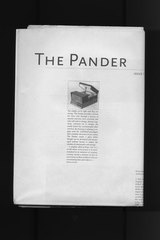
-
Andrew Forsberg, Robert Hutchinson, Vanessa York, The Pander 1
Spring 1997, Ming Press, ISSN 1174-4030, 1997
-
-
-
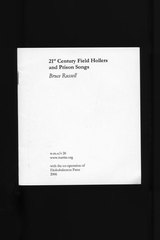
-
Bruce Russell, 21st Century Field Hollers and Prison Songs
W.M.O/Recordings (w.m.o./r 26), Spain, in co-operation with Ekskubalauron Press, Lyttelton New Zealand, 2006
www.mattin.org
-
-
-
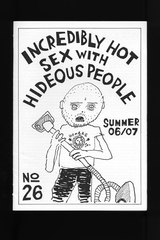
-
Bryce Galloway (with Daniel Powell), Incredibly Hot Sex With Hideous People 26
Summer 2006/07, PO Box 27527, Wellington New Zealand
-
-
-
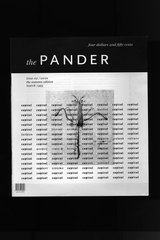
-
Chris Barker, Andrew Forsberg, Jack Ross, Deborah Smith, Vanessa York, The Pander 6/7
Ming Press, ISSN 1174-4030, 1999
www.thepander.co.nz
-
-
-
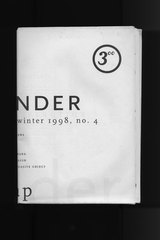
-
Chris Barker, Stella Brennan, Andrew Forsberg, Robert Hutchinson, Jack Ross, Vanessa York. The Pander 4
Ming Press, ISSN 1174-4030, 1998
-
-
-
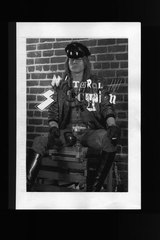
-
Dan Arps and Gwynneth Porter, Natural Selection 5
ISSN 1176-6808, 2006 Available as free PDF download
www.naturalselection.org.nz
-
-
-
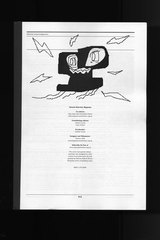
-
Dan Arps, Gwynneth Porter
Natural Selection 3, ISSN 1176-6808, 2005
-
-
-
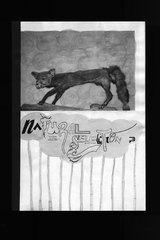
-
Dan Arps, Gwynneth Porter, Natural Selection 4
ISSN 1176-6808, 2005
-
-
-
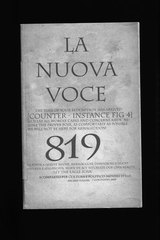
-
Et al. The Fundamental Practice
Creative New Zealand, Govett Brewster Art Gallery, Museum of New Zealand Te Papa Tongarewa, Part of New Zealand’s presentation for the Venice Biennale of International Art, 2005
-
-
-
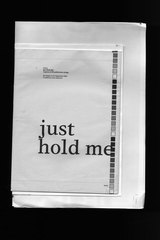
-
Jonty Valentine, Just Hold Me: Aspects of NZ Publication Design
Objectspace Gallery Auckland, 2006
-
-
-
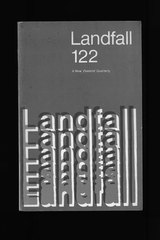
-
Landfall 122: A New Zealand Quarterly
guest edited by Rob Jackaman, edited by Peter Smart, Caxton Press Christchurch, 1977
-
-
-
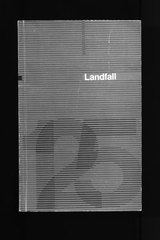
-
Landfall 125: A New Zealand Quarterly
edited by Peter Smart, Caxton Press Christchurch, 1978
-
-
-
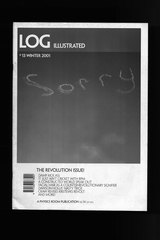
-
Log Illustrated 13
edited by Gwynneth Porter, The Physics Room, Christchurch New Zealand, 2001
www.physicsroom.org.nz
-
-
-
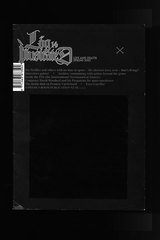
-
Log Illustrated 14
edited by Gwynneth Porter, The Physics Room, Christchurch New Zealand, 2001
www.physicsroom.org.nz
-
-
-
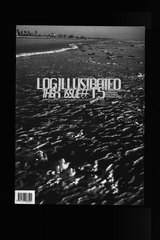
-
Log Illustrated 15
edited by Gwynneth Porter, The Physics Room, Christchurch New Zealand, 2002
www.physicsroom.org.nz
-
-
-
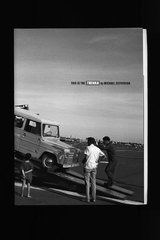
-
Michael Stevenson, This is the Trekka
Creative New Zealand, City Gallery Wellington, Global Art Projects, Revolver – Archiv fur aktuelle Kunst, Germany, 2003
-
-
-
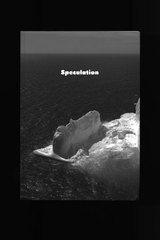
-
Speculation
edited by Brian Butler, Venice Project, Aotearoa New Zealand and JRP/Ringier, Zurich, 2007
www.artspace.org.nz
-
-
-
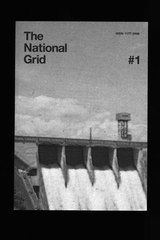
-
The National Grid 1
edited and designed by Luke Wood and Jonty Valentine, March 2006, New Zealand
-
-
-
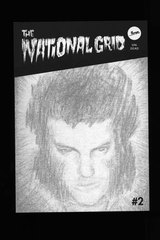
-
The National Grid 2
edited and designed by Luke Wood and Jonty Valentine, December 2006, New Zealand
-
-
-
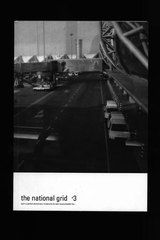
-
The National Grid 3
edited and designed by Luke Wood and Jonty Valentine, August 2007, New Zealand
www.thenationalgrid.co.nz
-
-
-
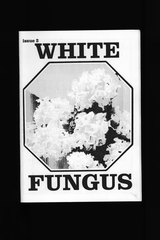
-
White Fungus 2
edited by Rudolf Hudsucker, December 2004
editor_whitefungus@yahoo.com
-
-
-
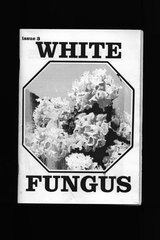
-
White Fungus 3
edited by Rudolf Hudsucker, March 2005
editor_whitefungus@yahoo.com
-
-
-
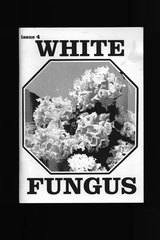
-
White Fungus 4
edited by Rudolf Hudsucker, September 2005
editor_whitefungus@yahoo.com
-